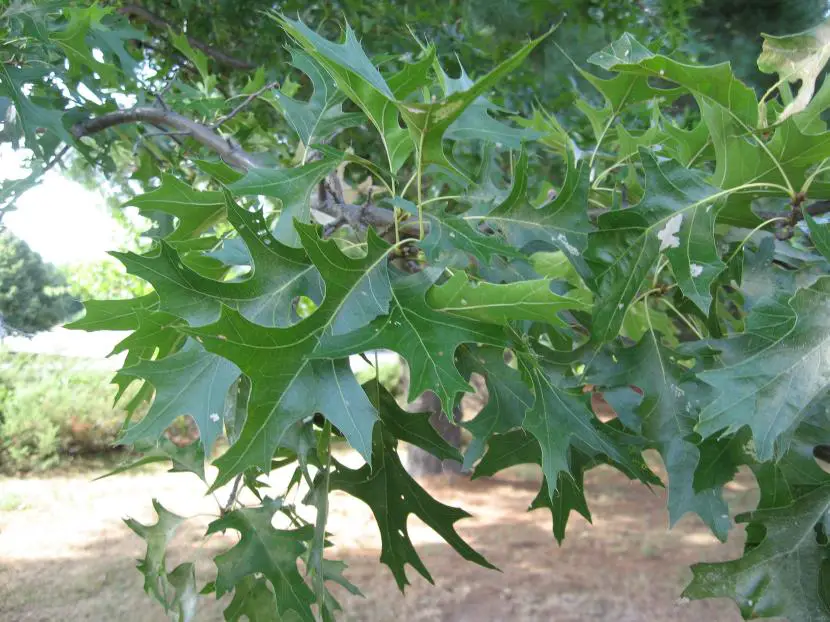
The Swamp oak it is an imposing tree. It can reach neither more nor less than 30 meters in height, so it is a plant that must be kept as an isolated specimen, or maintaining a separation between specimens of at least 7 meters. Its characteristic leaves seem to be very common, but they have a surprise: in autumn, when temperatures begin to drop, they turn a deep red color of exceptional beauty.
Do you want to know more? Discover how to enjoy this tree in your garden.

Scientifically known by the name of quercus palustristhis tree is native to eastern North America. Thanks to its resistance and adaptability, it has managed to naturalize in Australia and even Argentina. It could be said that it is one of the easiest Quercus species to care for, being able to try to grow in somewhat warm climatesas long as the seasons are well differentiated and the soil / soil is acidic.
It has glabrous leaves about 10-15cm long and 7-10cm wide, with five to seven lobes. As we said, in autumn they turn red until they finally fall. The fruit is an acorn that will be ripe by the end of the summermoment that can be collected to sow directly in the seedbed, or to artificially layer them in the fridge for 3 months.

Due to its large size, it should be planted at a safe distance from other tall plants, since otherwise its branches would intertwine and not grow properly. The ideal time for planting or transplanting is towards the beginning of springwhen the risk of frost has passed.
Water it often, about 3-4 times a week in summer and 2-3 every seven days the rest of the year. It is also highly recommended fertilize it with a specific fertilizer for acid plants throughout the growing season (spring to late summer) to keep it growing healthy and strong.
Do you dare to have a Swamp Oak?

